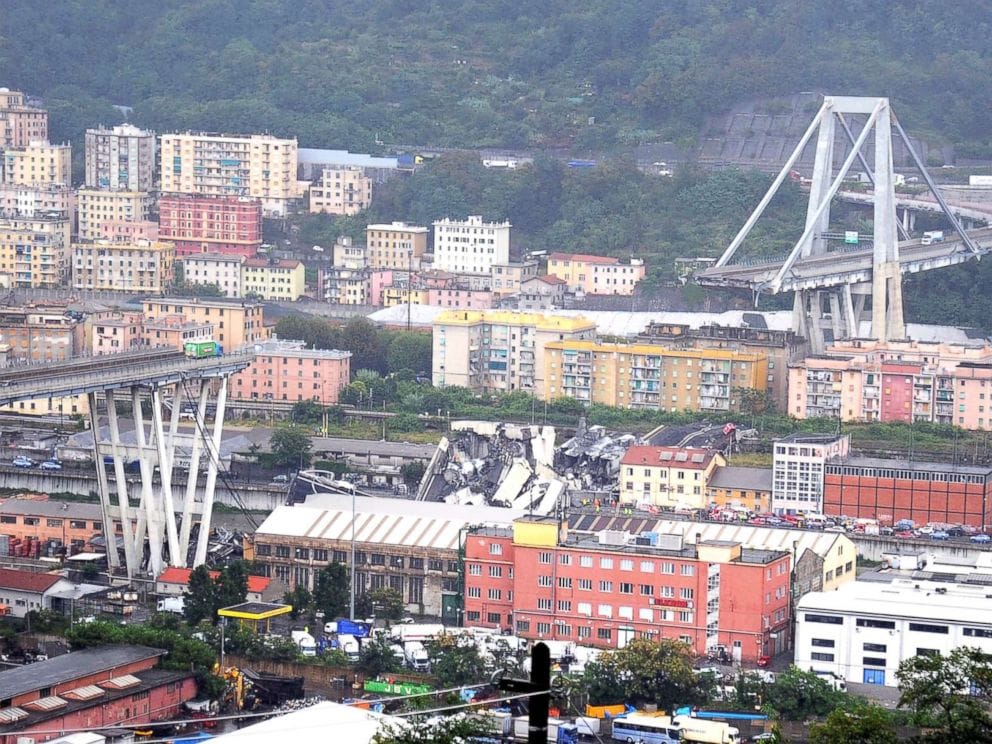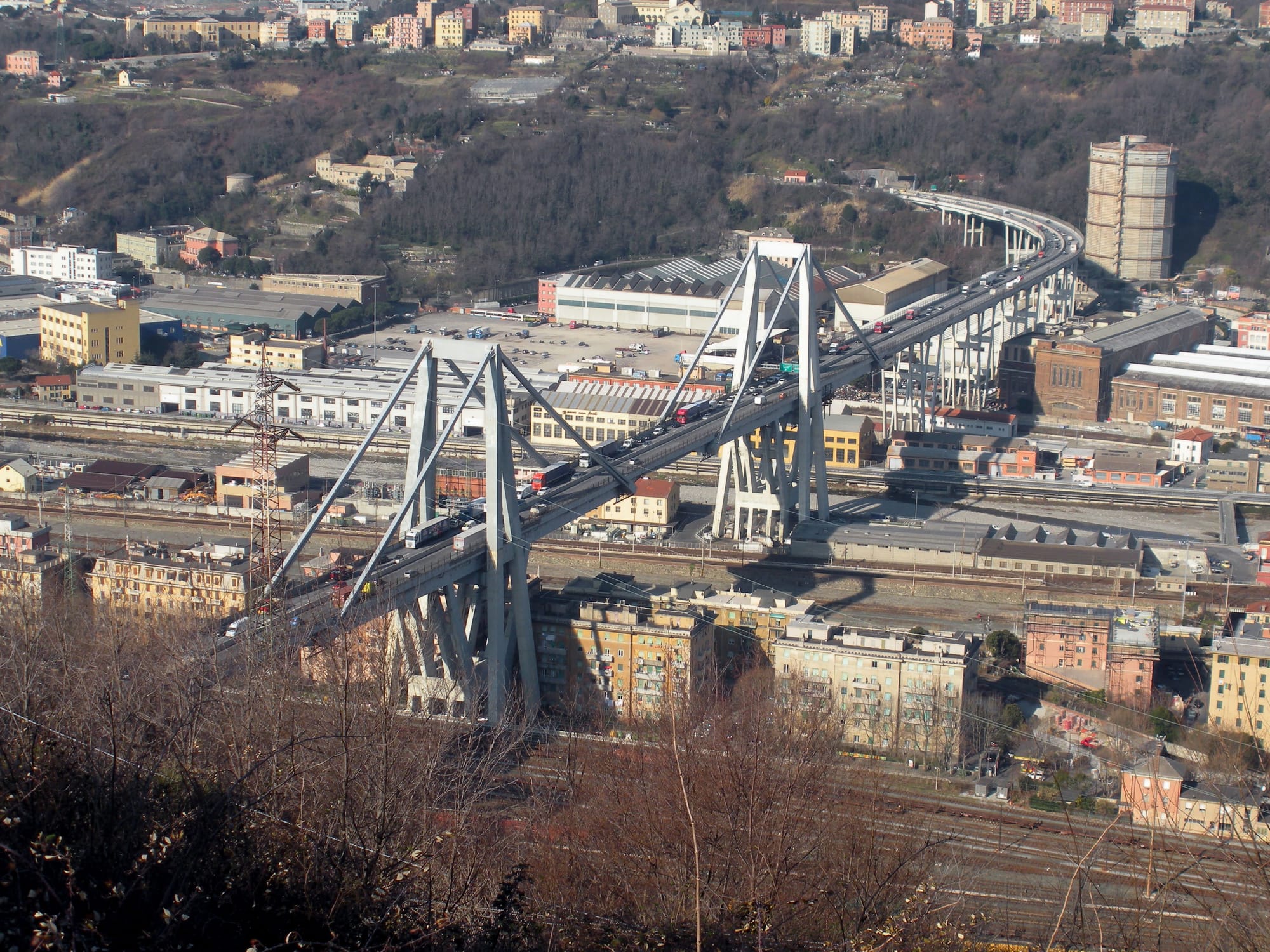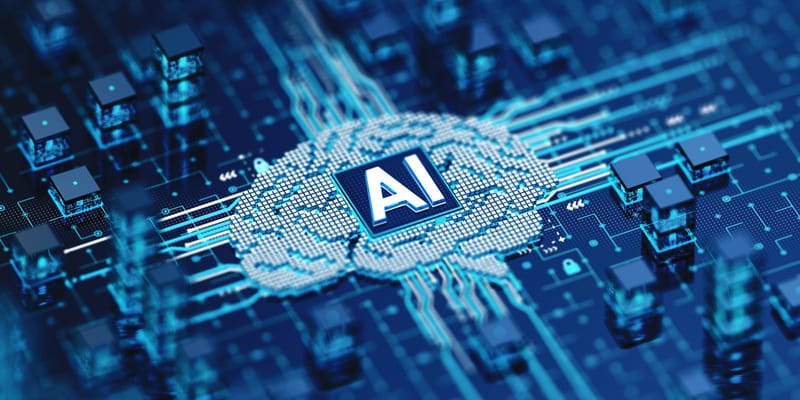
The collapse of the Ponte Morandi in Genoa has shocked the world. People rightly expect that bridges do not fall down.
But there are no absolutes – engineering science is not perfect, and there is much we don't yet know. Worse, without structural health monitoring of aged structures, we have little opportunity to learn from failures and make better predictions about future collapses.
And finally, bridge owners are always under pressure to reduce the costs involved in inspection and maintenance, while keeping open critical transport routes.
However, to put it in context, bridges are the safest of all major structures – more so than buildings and dams.
The risk of fatality from a bridge collapse is around one in 100 million per year, which is roughly 100 times less likely than being struck by lightning. And given that there are around one trillion (1012) bridges crossings annually, the risk in terms of exposure is remarkably low.
Natural hazards, overloading, deterioration and foundation problems are the leading causes of bridge collapse.
Nevertheless, these statistics originate from a time when the vast majority of bridges constructed are within their intended design working lives. Many of the bridges of the developed nations are at the end of their design lives.
Bridges are not set-and-forget pieces of infrastructure, but, in a structural sense, are living and breathing systems.
The collapse in Genoa is symptomatic of this worldwide trend – nowhere can be complacent. The increasing number of collapses we're seeing in recent years is likely to worsen as deterioration and increasing freight and traffic loads take their toll.

The problem is compounded by decision-makers cutting inspection and maintenance budgets on the historical basis of collapses being unlikely, just as their likelihood is increasing.
Bridge management, inspection and maintenance is somewhat costly. But the costs of a calamity – human, social, economic and reputational – far outweigh the costs of proper care.
Compared to large-scale new pieces of infrastructure, though, these costs are not as attractive to decision-makers or the public; no-one cuts a ribbon when an old bridge is repaired.
Although everyone knows it’s important, the funding for responsible care of our existing infrastructure falls somewhat below what's required.
The backlog of inspections and maintenance can't forever acrue without an increasing risk to public safety emerging.
Resources a must
Decision-makers and budget holders must realise that when accounting realities meet physical realities, nature prevails. Without question, engineers must be given the resources they need to keep the public safe and communities functioning.
Bridges are not set-and-forget pieces of infrastructure, but, in a structural sense, are living and breathing systems.
Structural health monitoring (SHM) systems use sensors to measure the response of a structure to the load acting on it. This gives bridge engineers invaluable information on how bridges behave in the field, rather than just in a laboratory.
Unfortunately, SHM is quite sparsely implemented, even though it's not particularly costly. This limits the opportunity for bridge engineers to learn from past failures, predict future failures, and improve our future designs.
Contrast this with the aerospace industry in which almost every failure has a full data stream to facilitate accurate diagnosis and protection against similar failures in the future.
Time to get smart
It's surely time that smart sensing solutions are mandated for use across all our aged infrastructure to protect people from events like the Genoa bridge collapse.
The time is nigh that we give the problem adequate resourcing. Then we can have the smart road network of the future, with automated truck platoons carrying hundreds of tonnes of goods, that so many people are excited about.
But right now, given the current state of resourcing, the science of managing and maintaining our existing infrastructure, it's difficult to think that this envisaged future can be fully realised.
The solution is to comprehensively resource and empower the engineers who deliver on public safety and functioning communities.





